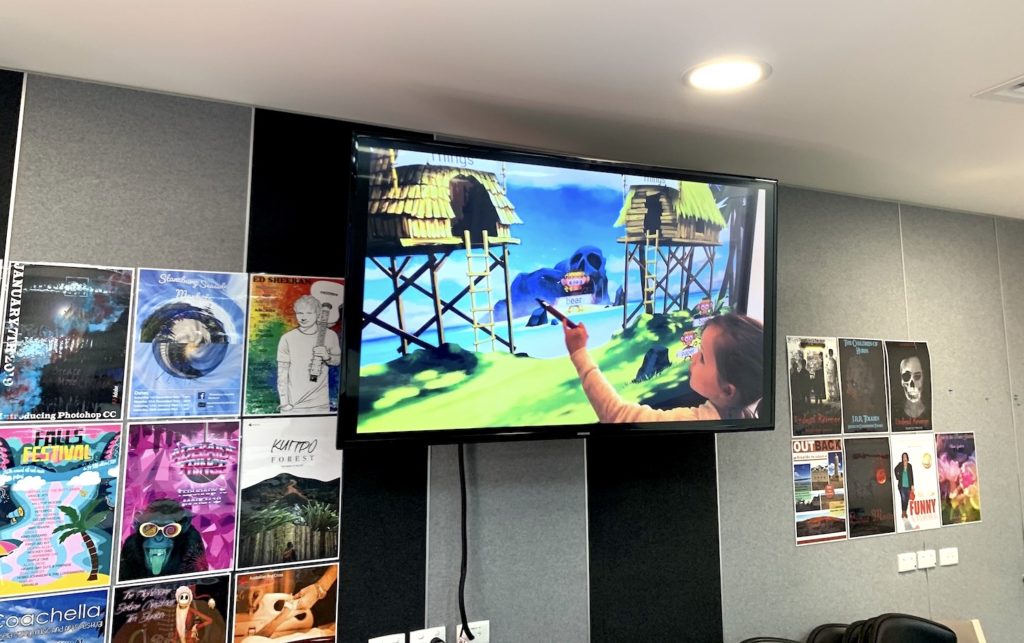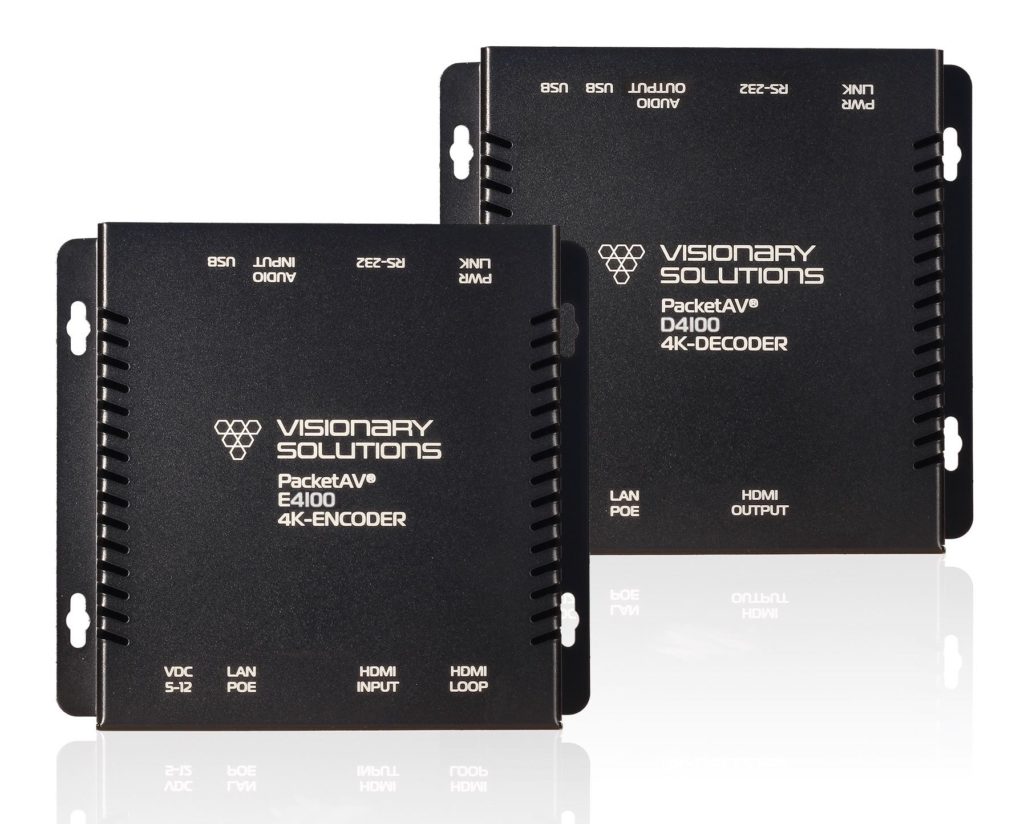IP
14 Sep 2020
Open Access College – Second Generation AVoIP

Subscribe to CX E-News
Most Australians know about School of the Air; they started doing distance education via two-way radio for remote rural students back in 1958. I’ve always had a soft spot for them, as several members of my family (and myself for one subject in Year 12) benefited from their services. Back in 1991, they amalgamated with the SA Correspondence School, and today’s Open Access College was created.
Having been innovators in remote learning and teaching for decades, its unsurprising that their facilities have always been at the cutting edge of technology for videoconferencing and collaboration.
They’re so far ahead of the technology curve that their first full AVoIP installation in their Marden Campus in Adelaide has come to its natural end-of-life. It doesn’t feel like that long ago we were still talking about ‘Convergence’ and debating whether or not AV had really ‘gone IP’ yet. In fact, I’m pretty sure it was last year.
Integrators Sonic Technology installed the first generation of AVoIP conferencing and collaboration tools into Marden back in 2015. “I came from a video conferencing background where understanding IT networks had always been important,” relates Darren Williams, Managing Director of Sonic Technology.
“When Sonic Technology started, we were mainly employing IT people, not AV people. We were doing video conferencing and cloud implementation; that helped us get into AVoIP installations and support for clients like Open Access College.”
Marden’s Studio One is a space that can accommodate up to 100 students, but typically hosts smaller groups or remote sessions. Two main monitors and a confidence monitor can take feeds from two cameras in the room, a document camera, or multiple remote sources.
The monitors can also easily be switched to show any source the presenter wants via an iPad.
The hardest thing about projects like this is in understanding network requirements and setup. That’s the biggest trap for integrators today
Sonic Technology has now swapped out the original encoders and decoders with Visionary Solutions E4100 and D4100s, which are PoE and support 4K. It says a lot about the maturity of a technology when you can substitute one product for another with only minimal disruption to the installation’s functions.
“The teachers and other users didn’t notice any changes when we upgraded the system,” reveals Darren. “Everything still has the same look and feel. The video switching through the Visionary Solutions product is very fast; it’s almost unnoticeable that it’s a stream.”
Along with the video upgrade, Sonic Technology took the opportunity to replace the audio DSP with a QSC Q-SYS Core 110f. “We’re a QSYS house for control and DSP, and we believe that’s best of breed in that space right now,” asserts Darren.
“We’ve turned over control of the room to Q-SYS, which gives us push-button, user-proof control with exactly the same look and feel that it had before.
“Because the Visionary Solutions system can transport control and USB, touch control can come from any device in the room. Users have the ability to send any content to any screen, or VC to any screen. They can also change the configuration of how the content is displayed within the VC.”
Making the job even smoother was Vision Lite, Visionary Solution’s 4K matrix switching, video wall control, and configuration software.
“Vision Lite made it very easy to configure the system,” states Darren. “It has this great feature that lets you see a thumbnail of the content that’s going to each E4100 and D4100.
“That made the process very time-friendly; you could just see what was going where. There’s also a soft codec router, which means you can ensure all your routes and Multicast streams are going to the right decoders before you code them into the control system.
“As a piece of software, Vision Lite runs a bit differently to others; you run it, open the IP address of the device you’re working with in a browser and then you can do device discovery and see what’s going where.”
Just having a list of instructions from the vendor on how to make it work isn’t enough. You need to be able to troubleshoot and diagnose problems
Studio One’s existing 84” Commbox monitors, 50” confidence monitor, Cisco P60 cameras, Vaddio ceiling camera, room PCs, Cisco SX80 telepresence boxes, Dante devices, Audio Technica ceiling mic array, and Audio Technica wireless mics were all connected to the Q-SYS control platform and Visionary Solutions with a minimum of fuss.
“We also added remote technical support access so we can run firmware upgrades and the like,” adds Darren. “The hardest thing about projects like this is in understanding network requirements and setup. That’s the biggest trap for integrators today.”
With 13 years at Open Access, Learning Technology Systems Manager Kenneth Burgoyne agrees. “I think the most important thing when you’re running a network for AVoIP is understanding Multicast and what it means,” he concurs.
“Just having a list of instructions from the vendor on how to make it work isn’t enough. You need to be able to troubleshoot and diagnose problems. In your design, you need to limit Multicast to certain parts of the network, and you need to know how to do that effectively.”
Kenneth’s network is running on HPE Aruba 2930F switches at the edge and 5406R switches at the core. “We have an AV VLAN, which we are currently looking at breaking into smaller, more defined room or system VLANs,” expounds Kenneth.
“Some of our VLANs are for traffic control, some for device types, and some for security. It’s about knowing where your network boundaries are and why, and what tools you have to build and enforce those boundaries.”
With both Sonic Technology and Open Access College now old hands at AvoIP, what’s the biggest challenge that their systems face?
“I say that video is easy, but audio is hard,” posits Kenneth. “It’s hard in terms of controlling the space and where audio sources are.
“Most often you’re working in a space that was originally designed for someone standing in it and presenting to an audience that is also in the room. Now we’re trying to do something very different.”
Studio One addresses this issue with acoustic treatment and an array of 12 microphones in the ceiling to pick up questions from students when present in large numbers.
“Audio DSP is advancing quickly and is much more powerful than it used to be,” observes Kenneth. “We’ve really appreciated Q-SYS software upgrades, which would have meant hardware replacements a few years ago.
“Our biggest audio challenge is having 40 people at one end of a video conference, 15 people at the other, and how they interact with each other. We need to have enough mics, avoid picking up the background, and then have enough Acoustic Echo Cancellation processing to deal with it all.”
www.openaccess.edu.au
sonictechnology.com.au
CX Magazine – September 2020
LIGHTING | AUDIO | VIDEO | STAGING | INTEGRATION

Entertainment technology news and issues for Australia and New Zealand
– in print and free online www.cxnetwork.com.au
© VCS Creative Publishing
Subscribe
Published monthly since 1991, our famous AV industry magazine is free for download or pay for print. Subscribers also receive CX News, our free weekly email with the latest industry news and jobs.














